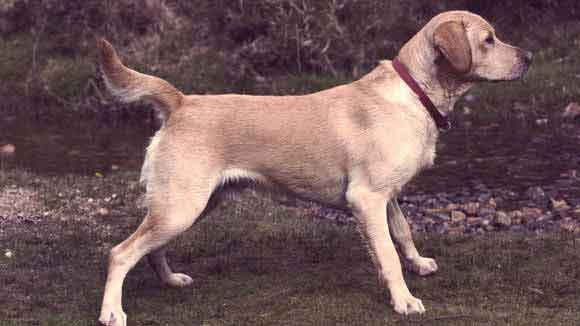No matter the size of your backyard, there are plenty of ways to transform your space into a doggy paradise. With the help of Tails Magazine, here are a few necessities for backyard your dog will drool over.
Fences. If at all possible fence in your space—both to keep your dog inside, and to keep other animals out. Make sure it’s high enough that your pup can’t jump over it, and if necessary, install protection underneath to keep your dog from digging his or her way out. If your dog is a barker, consider fencing that isn't see through.
Keep it Cool. Most dogs love lying in the sun on a warm summer day, but dehydration, heatstroke, and sunburn are all risks during the warmer months. If you don’t have any naturally occurring shady spots, invest in an umbrella or something similar to create a place where your dog can go to escape the sun’s rays. A doghouse is another great option. Does your dog like water? Fill up a kiddie pool with ice and water and let your dog cool off in a perfect sized watering hole.
Pet-Friendly Plants. Dogs can certainly appreciate flowers and plants, but be cautious about what you plant that your dog has access to. Many common flowers are potentially toxic to your furry friend. Check out our previous blog post on
how to build a pet-friendly garden.
Potty Spot. A designated spot for "calls of nature" allow your yard to be kept clean easily. Mark off a specific area and encourage your dog to only go potty there. Try partitioning it off with a mini fence, large rocks, or some shrubbery. You can even put in a fake red fire hydrant to make the spot extra enticing!
Dig Zone. Dogs will be dogs, and dogs love to dig...which can be bad news for your lawn. Consider setting up a specific spot where your pup can dig to his or her heart’s content. Think of it as a doggy sand box, filling it with sand or soft soil, and let the hole to the center of the earth begin! If you have a determined digger who just won’t stick to one area, try sprinkling a natural deterrent such as cayenne pepper on the areas you want your dog to stay away from.
Toys. What’s a dog’s dream backyard without the perfect toys? Fun and interactive toys are a great way for your dog to burn some physical and mental energy while off-leash in the back yard. Try keeping some toys specifically for outdoors to make the backyard more special!
Time spent outdoors is enriching for your dog and gives ample opportunities to sniff, discover, and explore. Remember not to leave your dog outdoors unattended, and be cautious of the amount of time spent outside during the hot summer months. Your backyard can be a great place for you and your dog to enjoy quality time together. Take advantage!
Source:
Tails Magazine
 Human beings often make time to work out at a gym or go for
a run. Some love it and some do it grudgingly. Most people know that some kind
of exercise is important for our bodies, whether or not they follow through
with it. As with many of the topics we’ve written about, this is another
similarity between humans and our pets.
Human beings often make time to work out at a gym or go for
a run. Some love it and some do it grudgingly. Most people know that some kind
of exercise is important for our bodies, whether or not they follow through
with it. As with many of the topics we’ve written about, this is another
similarity between humans and our pets. You might think that if you have a big backyard, your dog is
all set. This isn’t the case. Just because someone has a home gym or buys the
next exciting exercise equipment from an infomercial doesn’t mean they use it,
right?
You might think that if you have a big backyard, your dog is
all set. This isn’t the case. Just because someone has a home gym or buys the
next exciting exercise equipment from an infomercial doesn’t mean they use it,
right?



































.jpg)

